How to adjust brightness on Eizo RadiForce MX191?
- WWilliam BerryAug 20, 2025
If your Eizo Monitor screen is either too bright or too dark, use the [Brightness] or [Contrast] settings to adjust the display to a comfortable level.
How to adjust brightness on Eizo RadiForce MX191?
If your Eizo Monitor screen is either too bright or too dark, use the [Brightness] or [Contrast] settings to adjust the display to a comfortable level.
What to do if Eizo RadiForce MX191 says no signal?
If your Eizo Monitor displays a 'no signal' message, check that your PC is turned on and that the signal cable is properly connected. You may also need to switch the input signal.
What to do if Eizo RadiForce MX191 input signal is out of range?
If your Eizo Monitor displays a message indicating that the input signal is outside of the specified frequency range, ensure the signal settings on your PC match the monitor's resolution and vertical frequency settings. Try rebooting your PC. If the issue persists, use your graphics board's utility to select an appropriate display mode.
Why is my Eizo RadiForce MX191 Monitor not detected via USB?
If your Eizo Monitor is not detected when connected via USB, verify that the USB cable is properly connected. Restart your PC and ensure that both your PC and its operating system are USB compliant.
Why is the power indicator on my Eizo Monitor lighting orange?
If the power indicator on your Eizo Monitor is orange, try switching the input signal. Also, try operating the mouse or keyboard and check that your PC is turned on.
How to fix vertical bars on Eizo RadiForce MX191 Monitor?
If you see vertical bars or flickering on your Eizo Monitor screen, adjust the [Clock] setting to resolve the issue.
Why is my Eizo RadiForce MX191 screen flickering?
If your Eizo Monitor screen is flickering or blurring, try adjusting the [Phase] setting.
How to fix blurred characters on Eizo Monitor?
If characters appear blurred on your Eizo Monitor, ensure that the signal setting of your PC matches the resolution and vertical frequency settings for the monitor. You can also adjust the [Sharpness] setting.
How to remove interference patterns on Eizo Monitor?
If you are experiencing interference patterns or pressure marks on your Eizo Monitor screen, leave the monitor displaying a white or black screen. The symptom may disappear over time.
Why are letters colored on my Eizo Monitor?
If the outline of letters displayed on your Eizo monitor appears colored, the [Sharpness] setting might be set too high.
Instructions for cleaning the LCD panel surface using a soft cloth, detailing stain removal methods.
Guidelines for cleaning the monitor cabinet with a damp cloth and mild detergent, ensuring no damage.
Tips for eye comfort, including adjusting screen brightness and taking short breaks during use.
Details on monitor features like overdrive circuit, dual-input system, Auto EcoView, and calibration software.
Identification and operational status of monitor control buttons and the power indicator light.
How to navigate, modify, and save settings using the adjustment menu and its icons.
Overview of software on the EIZO LCD Utility Disk, including RadiCS LE and ScreenManager Pro.
Steps for analog input screen adjustment, including auto size, clock, phase, and position correction.
Explains DICOM-CL, TXT, CUS, and CAL modes for tailoring display to specific applications.
Detailed adjustments for brightness, contrast, gamma, color temperature, gain, saturation, and hue.
How to adjust image sharpness to emphasize or soften outlines for improved visual quality.
Enabling/disabling the automatic brightness adjustment function based on ambient environmental light.
Configuring the monitor to automatically turn off after a set period to prevent after-images.
How to activate Key Lock and Menu Lock to prevent accidental changes to settings.
Accessing details like input signal status, resolution, model name, and usage history.
How to control the state (ON/OFF) of the monitor's power indicator (blue LED).
How to select the preferred language for the adjustment menu and on-screen messages.
Option to enable or disable the display of the EIZO logo during the monitor's startup sequence.
Instructions for resetting color adjustments or all monitor settings back to factory defaults.
Guide for connecting two PCs to the monitor using DVI-D and D-Sub connectors.
Configuration for the monitor to automatically detect and switch between active input signals.
Diagnosing problems with the power indicator and initial display.
Resolving "No Signal" messages and issues related to incorrect signal frequency ranges.
Solutions for problems with brightness, blurriness, color fidelity, and afterimages on the screen.
Addressing interference patterns, pressure marks, color outlines, and incorrect image position.
Methods to eliminate vertical bars, screen flickering, or overall image blurring.
Troubleshooting when the adjustment menu is inaccessible or the auto-adjust function fails.
Steps to verify USB cable connection and ensure the monitor is detected by the PC.
Instructions for detaching the original stand and mounting the monitor using alternative arms or stands.
Explanation of analog and digital input power saving states and how to resume normal operation.
Comprehensive technical data including panel size, resolution, input signals, power, and dimensions.
Definitions of key terms used in the manual, such as DICOM, DVI, Gamma, and HDCP.
Factory preset video timing information for analog signals, including dot clock and frequency.
Statement confirming the device's compliance with Canadian ICES-003 for Class B digital apparatus.
Manufacturer's declaration on RF emissions and suitability for use in various electromagnetic environments.
Manufacturer's declaration on immunity to electrical disturbances and recommended environments for operation.
Recommended minimum separation distances for portable RF devices to prevent electromagnetic interference.
Instructions for cleaning the LCD panel surface using a soft cloth, detailing stain removal methods.
Guidelines for cleaning the monitor cabinet with a damp cloth and mild detergent, ensuring no damage.
Tips for eye comfort, including adjusting screen brightness and taking short breaks during use.
Details on monitor features like overdrive circuit, dual-input system, Auto EcoView, and calibration software.
Identification and operational status of monitor control buttons and the power indicator light.
How to navigate, modify, and save settings using the adjustment menu and its icons.
Overview of software on the EIZO LCD Utility Disk, including RadiCS LE and ScreenManager Pro.
Steps for analog input screen adjustment, including auto size, clock, phase, and position correction.
Explains DICOM-CL, TXT, CUS, and CAL modes for tailoring display to specific applications.
Detailed adjustments for brightness, contrast, gamma, color temperature, gain, saturation, and hue.
How to adjust image sharpness to emphasize or soften outlines for improved visual quality.
Enabling/disabling the automatic brightness adjustment function based on ambient environmental light.
Configuring the monitor to automatically turn off after a set period to prevent after-images.
How to activate Key Lock and Menu Lock to prevent accidental changes to settings.
Accessing details like input signal status, resolution, model name, and usage history.
How to control the state (ON/OFF) of the monitor's power indicator (blue LED).
How to select the preferred language for the adjustment menu and on-screen messages.
Option to enable or disable the display of the EIZO logo during the monitor's startup sequence.
Instructions for resetting color adjustments or all monitor settings back to factory defaults.
Guide for connecting two PCs to the monitor using DVI-D and D-Sub connectors.
Configuration for the monitor to automatically detect and switch between active input signals.
Diagnosing problems with the power indicator and initial display.
Resolving "No Signal" messages and issues related to incorrect signal frequency ranges.
Solutions for problems with brightness, blurriness, color fidelity, and afterimages on the screen.
Addressing interference patterns, pressure marks, color outlines, and incorrect image position.
Methods to eliminate vertical bars, screen flickering, or overall image blurring.
Troubleshooting when the adjustment menu is inaccessible or the auto-adjust function fails.
Steps to verify USB cable connection and ensure the monitor is detected by the PC.
Instructions for detaching the original stand and mounting the monitor using alternative arms or stands.
Explanation of analog and digital input power saving states and how to resume normal operation.
Comprehensive technical data including panel size, resolution, input signals, power, and dimensions.
Definitions of key terms used in the manual, such as DICOM, DVI, Gamma, and HDCP.
Factory preset video timing information for analog signals, including dot clock and frequency.
Statement confirming the device's compliance with Canadian ICES-003 for Class B digital apparatus.
Manufacturer's declaration on RF emissions and suitability for use in various electromagnetic environments.
Manufacturer's declaration on immunity to electrical disturbances and recommended environments for operation.
Recommended minimum separation distances for portable RF devices to prevent electromagnetic interference.
| Screen Size | 19 inch |
|---|---|
| Resolution | 1280 x 1024 |
| Panel Type | IPS |
| Contrast Ratio | 1000:1 |
| Color Gamut | sRGB |
| Viewing Angle | 178° horizontal / 178° vertical |
| Input Connectors | DVI-D |
| Color Depth | 10-bit |
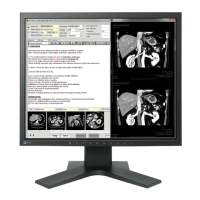


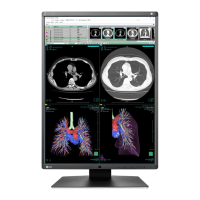
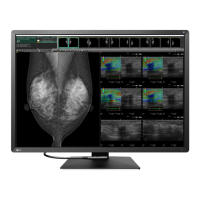


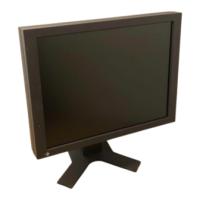


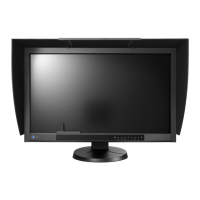

